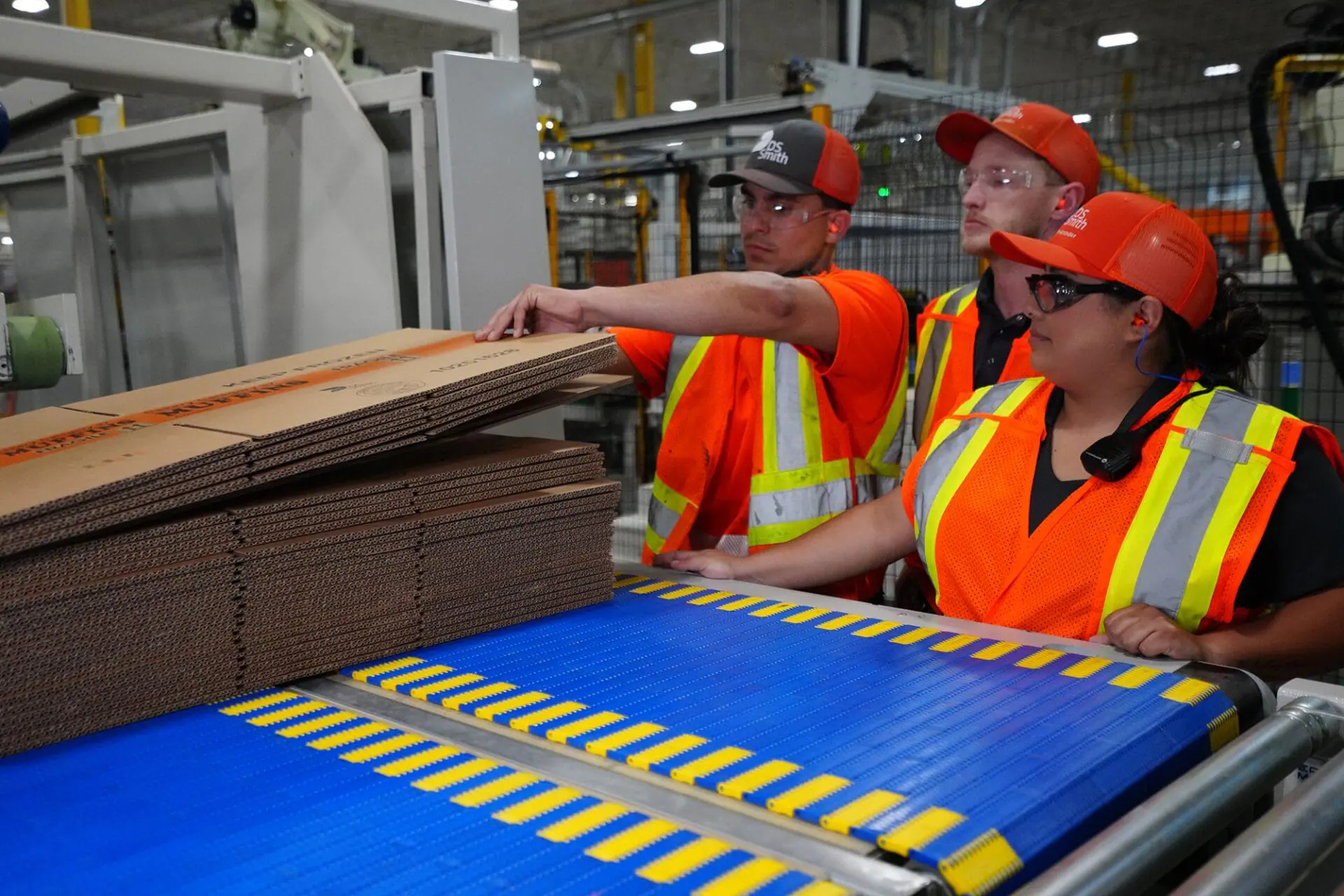How interpreters are helping this Indiana plant address its labor shortage
(CNN) — Like many manufacturers, DS Smith sorely needed more workers in 2022.
The multinational packing company’s corrugated box plant in Lebanon, Indiana, tried billboards, yard signs, jobs fairs and flyers at churches and fast-food restaurants but found it still took an average of three months to fill roles. That meant existing employees had to put in a lot of overtime, including some Saturday shifts.
Then, the facility’s human resources manager, Becky Gordon, had a novel idea. She had noticed that the plant, which opened in 2019, had to turn away a growing number of job candidates who spoke only Spanish because it did not have bilingual personnel to interview, train and manage them.
“In order to diversify and bring in more talent, we needed to be able to speak with people whose first language is not English,” Gordon said, noting the growing communities of recent Venezuelan and Nicaraguan immigrants in the nearby cities of Indianapolis and Frankfort.
So she decided to hire a full-time interpreter, then added two more. That has enabled the plant to boost its Spanish-speaking workforce to 92, or 42% of its staff, up from eight people, or 6%, in 2022. The facility, which pays $20 an hour to start, can now fill jobs in less than half the time.
DS Smith launched the interpreter program as manufacturers were coming under pressure from all sides. The pandemic-fueled spike in online deliveries boosted demand for cardboard boxes, but the tight labor market made it hard for companies to find enough employees. At the same time, an influx of asylum seekers, many from Spanish-speaking countries, were looking for work.
The interpreter program is largely responsible for allowing the plant to triple the number of boxes it now produces annually compared to three years ago, in part because it is able to fully staff a third shift.
While US companies have long worked with interpreters and translators, not many employ them as full-time staffers, according to translation and human resource experts. Instead, businesses may use language service firms, hire contractors or rely on bilingual employees to communicate with job applicants and workers.
“At least three quarters, if not more, of the translation and interpreting workforce in the United States are independent contractors,” said Ben Karl, spokesperson for the American Translators Association, the largest professional organization for translators and interpreters in North America, referencing several national studies. “There are actually very few staff interpreters in the United States, and most of them work for the courts or for health care systems.”
Opening doors
The first interpreter DS Smith hired was Elissa Ramirez, 27, who was born in Los Angeles. Ramirez moved with her mom to Mexico when she was 5 years old, and returned to the United States eight years ago in search of better opportunities. Speaking little English at the time, she found work at meat processing companies — always responding “yes” to her supervisor, even though she didn’t understand what he was saying because she was afraid of losing her job.
Looking to advance, Ramirez learned English and now helps to make sure DS Smith’s Spanish-speaking workers aren’t in the same position as she was not that long ago.
Ramirez sits in on job interviews and orientation and has helped translate documents — from benefits information to machine operating instructions to safety presentations — from English to Spanish. She works on the floor with trainers and supervisors to teach Spanish-speaking workers how to use the equipment. Currently, she’s working on adding Spanish subtitles to training videos. Some of the translated materials are being shared at several of the more than a dozen other facilities that DS Smith operates in North America.
The interpreters on the afternoon and overnight shifts, who hail from Mexico and Puerto Rico, primarily work on the production floor to facilitate communication between the supervisors and trainers and the Spanish-speaking employees.
“It was opening the doors not just for me, it was opening the doors for everyone who doesn’t speak English,” Ramirez, who is exploring careers in human relations or communications, said of the interpreter program.
Already, some of the immigrant workers have been promoted, and several are leading crews of Spanish-speaking colleagues.
Eduardo Vera is one of those workers. He arrived in the United States from Venezuela in 2021 and joined DS Smith the following year after working as a hospital custodian. Vera, 29, has since been promoted twice and is now a machine operator, which he said he couldn’t have achieved had he not been able to turn to Ramirez for help while training.
“Here in this company, I get goals that I didn’t have before,” said Vera, with Ramirez acting as a translator. “My goal is to one day be a supervisor to help my team.”
Hiring challenges continue
Hiring remains competitive in Boone County, said Molly Whitehead, CEO of the Boone Economic Development Corporation.
The jobless rate in the county, where DS Smith is one of five corrugated box manufacturers, has been in the 2% or 3% range since mid-2020.
In such a tight labor market, companies have to offer different amenities to make themselves the employer of choice, Whitehead said. But she’s not aware of any other business with a formal interpreter program like DS Smith’s.
That effort has allowed the company to cast a wider net in recruiting in Lebanon, the largest of its North American facilities and the only one to employ interpreters, said Monica Anderton, the company’s chief human resources officer for North America. Now, its immigrant employees are referring friends and family for jobs — including Vera, who brought his brother to work at the plant.
“It really tapped an underutilized labor workforce that was out there that we weren’t aware of until we put this in place,” Anderton said.
